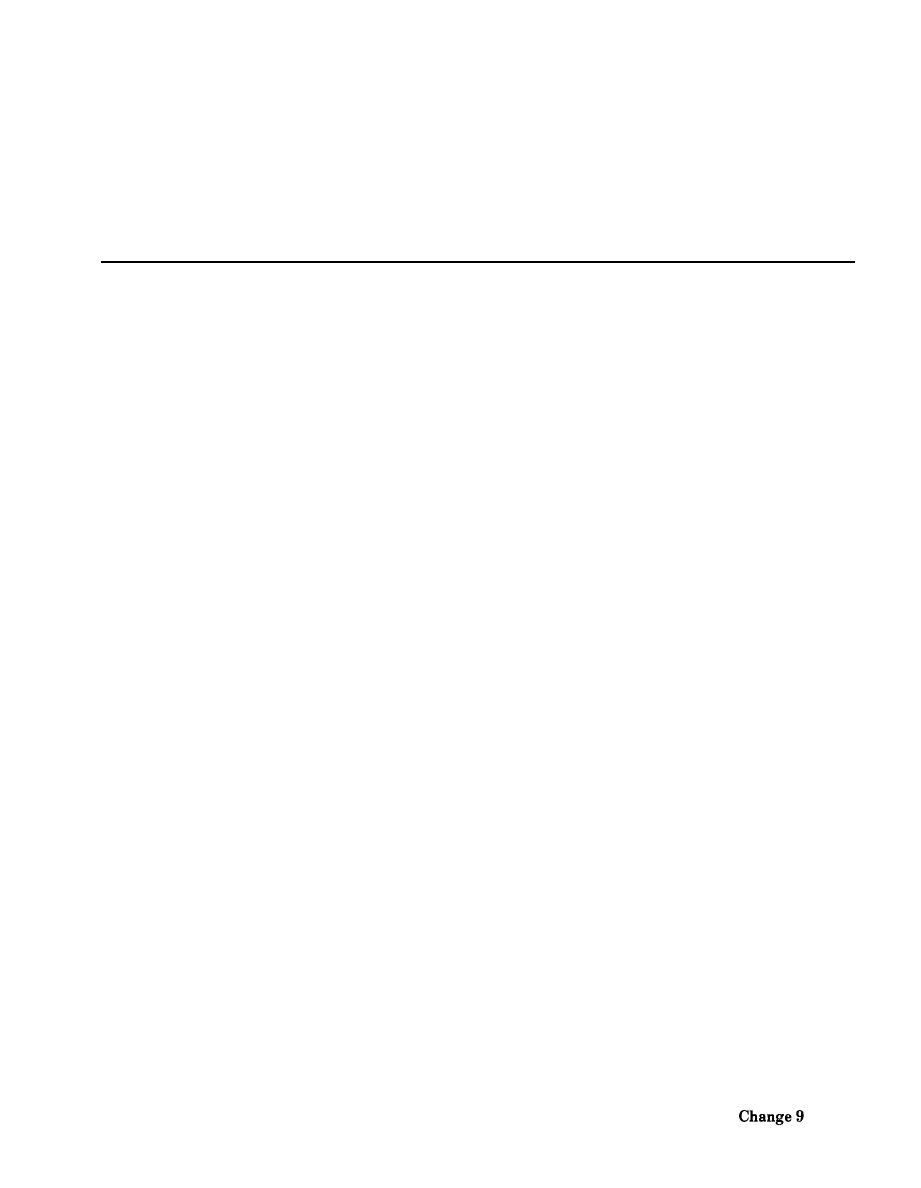
TM 5-6115-271-14
TO 35C2-3-386-1
TM-05926A-14
NAVFAC P-8-613-14
MAINTENANCE ALLOCATION CHART
(ARMY ONLY)
Section I.
INTRODUCTION
C-1. General
(3) Service. Operations required periodically to
a. This section provides a general explanation of
keep an item in proper operating condition, i.e., to
all maintenance and repair function authorized at
clean (decontaminate), to preserve, to drain, to paint,
various maintenance levels.
or to replenish fuel, lubricants, hydraulic fluids, or
b. Section II designates overall responsibility for
compressed air supplies.
the performance of maintenance functions on the iden-
(4) Adjust. To maintain within prescribed limits,
tified end item or component and the work measure-
by bringing into proper or exact position, or by setting
ment time required to perform the functions by the
the operating characteristics to specified parameters.
designated maintenance level. The implementation of
(5) Align. To adjust specified variable elements
the maintenance functions upon the end item or com-
of an item to bring about optimum or desired
ponent will be consistent with the assigned
performance.
maintenance functions.
(6) Calibrate. To determine and cause correc-
c. Section III lists the tools and test equipment re-
tions to be made or to be adjusted on instruments or
quired for each maintenance function as referenced
test measuring and diagnostic equipments used in
from Section II.
precision measurement. Consists of comparison of
two instruments, one of which is a certified standard
C-2. Explanation of Columns in Section II
of known accuracy, to detect and adjust any
a. Column (1), Group Number. Column 1 lists
discrepancy in the accuracy of the instrument being
group numbers to identify related components,
compared.
assemblies, subassemblies, and modules with their
(7) Install. The act of emplacing, seating, or fix-
next higher assembly. The applicable groups are listed
ing into position an item, part, or module (component
in the MAC in disassembly sequence beginning with
or assembly) in a manner to allow the proper function-
ing of an equipment or system.
the first group removed.
b. Column (2), Component/Assembly. This col-
(8) Replace. The act of substituting a serviceable
umn contains the noun names of components,
like type part, subassembly, or module (component or
assembly) for an unserviceable counterpart.
assemblies, subassemblies and modules for which
maintenance is authorized:
(9) Repair. The application of maintenance ser-
c. Column (3), Maintenance Functions. This col-
vices (inspect, test, service, adjust, align, calibrate, or
umn lists the functions to be performed on the item
replace) or other maintenance actions (welding, grind-
listed in Column 2. The maintenance functions are
ing, riveting, straightening, facing, remachining or
resurfacing) to restore serviceability to an item by cor-
defined as follows:
(1) Inspect. To determine serviceability of an
recting specific damage, fault, malfunction, or failure
item by comparing its physical, mechanical, and/or
in a part, subassembly, module (component or
electrical characteristics with established standards
assembly), an end item, or system.
through examination.
(10) Overhaul. That maintenance effort (ser-
vice/action) necessary to restore an item to a complete-
(2) Test, To verify serviceability and detect in-
ly serviceable/operational condition as prescribed by
cipient failure by measuring the mechanical or elec-
trical characteristics of an item and comparing those
maintenance standards (i.e., DMWR) in appropriate
characteristics with prescribed standards.
technical publications. Overhaul is normally the
highest degree of maintenance performed by the Ar-
my. Overhaul does not normally return an item to like
new condition.


